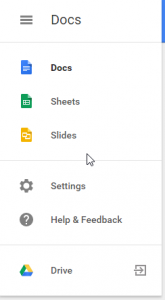Add-ins and Applications
Add-ins are plugins that integrates with a Microsoft Office application/s to extend or add a functionality that was not there before. These add-ins can be easily created to work privately within your companies Office environment, or can be created to work publicly on the Office add-ins marketplace. Ranging from business insight, all the way down to specific formatting Office add-ins are the way to go if you or your company needs a specific work flow.
Office over the last 10 years has done a phenomenal job in preserving compatibility and extending the tool set that developers can use to create these add-ins, and with new versions of Microsoft Office we can see these newer functions being extended upon by the developers. Office 365 and Microsoft Office 2013 have changed the game by further allowing cloud based add-ins and applications to be created that can extend the functionality of almost every Microsoft Office service imaginable both on desktop online. Add-ins and applications can also be made to work with Microsoft Azure platform to integrate the cloud with your needs.
Some might be wondering what is the difference between an add-in and an application. I know I was when I first started working with SDS so here the break down. Add-Ins cannot operate by itself while an application has its own interface and doesn’t need to synchronize with another application to work properly. If you need to extend a feature that is already included in Microsoft Office (2007 – 365) then your best options would be to look for that add-in that has the functionality that you need or have it custom developed.
Range and Flexibility
We can see a great example of Microsoft’s range and flexibility when it comes to opening its API by seeing the growth of applications in its Windows Store and online by companies that have created online services and applications that integrate seamlessly with Office 365, Dynamics CRM, Azure, Yammer, Skype and much more.
But what happens when you just can’t find what your or your company is looking for? What happens when you have something that only does 90% of what you need? Or even worse, what if you can’t find something that even begin to address what you need to accomplish your project goal? Or what if a tool exists that has no clear way of getting to work with your existing lineup of applications? These are all real concerns that companies face day to day and its important to find solutions that works.
Tailored from the beginning
With custom application development it can get a little trickier because it typically takes more time to develop and comes with a higher price tag. But that being said you will have a custom application that has the functions that you need and that integrate with your existing environment.
Custom application development is usually the last stop for companies trying to obtain the functions that they need. This can be a problem in later stages when a specific set of tools have been implemented and are in active use by employees and companies start looking for a custom solution. Often times you are faced with learning a new application, configuring the services, aggregating the resources to work with your existing data, migration, and training. By going down the custom route from the start you can substantially cut down those steps and focus on what is important.
Personally if I can’t find the application that has the complete set of functions I need I would begin to look into application development from the get go. The reason being that if I have projects underway that have timeframes that I need to keep up with then It would be in my companies best interest to avoid wasting time configuring, or training my staff on something that was never intended to be used in that way. Some applications or add-ins offer customization from the start and just require some tinkering with to get to work. A great example of this is Microsoft Dynamics. Microsoft Dynamics has the building blocks to create necessary CRM processes and merges with Office 365, Azure, and Yammer. Plugins and Add-ins can also be developed to extend the applications core function allowing customization on a level rarely seen in a CRM suite.
The integration is strong in this one
Microsoft has done a fantastic job creating the ecosystem needed to harbor communications on all levels. Having the tools that we have now we can make sure that the experience is tailored to the end users specification. Having the headaches taken out of the equation decisions maker can get back to what’s important, and that’s making decisions and managing projects. Not having to worry that your staff has to waste time by duplicating efforts because of software allows you to get back to what matters and companies such as ours are here to help.
In closing
If you have been having issues with an application, or just can’t seem to get an add-in to work the way you want it to don’t hesitate to reach out to us. Whether its for add-ins, custom application development, or just to chit chat we are interested in hearing from you. We enjoy working with people and strive to bring modern solutions that make sense. For more information please email us at information@sdselite.com or give us a call at: 1-866-888-2586
Written by: Lorenzo v.









